Lipedema is a chronic disease that causes irregular fat deposition, pain, swelling, and easy bruising, generally of the legs and arms, and is not amenable to diet and exercise. Cellulite is a cosmetic condition in which typical fat bulges against connective tissue, producing skin dimpling without pain, swelling, or other manifestations of disease. The most significant differences are affected sites, type of fat, and symptoms: lipedema involves pathological fat with medical symptoms (arms and legs, not hands and feet), whereas cellulite involves normal fat and mostly affects buttocks, thighs, and abdomen.
Lipedema and cellulite, while too often and improperly employed synonymously, are not twin disease conditions but two forces imprinted on the skin and on the body. Both produce a topography of irregular surface and dimpling, and the etiologies from which they arise are clearly different. Lipedema is a progressive, pathologic illness and cellulite falls into the realm of the aesthetic nuisance, a condition ubiquitously present on and across the human body.
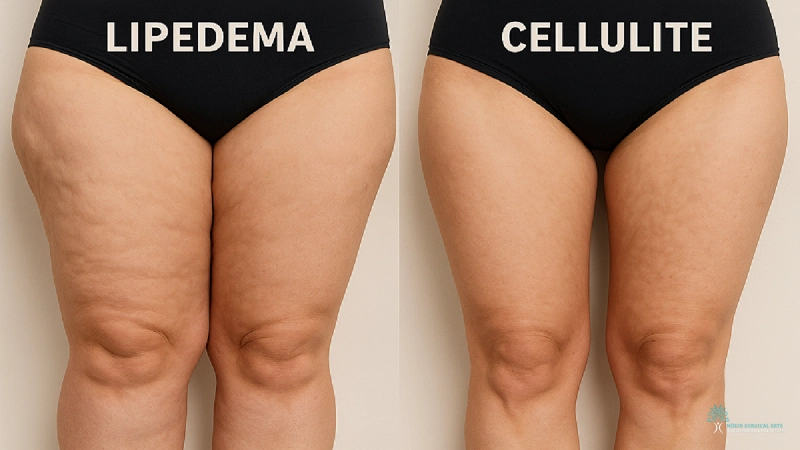
Far too commonly, unwanted bulk in the thighs, water retention in the hips, or unevenness in the arms is brushed aside as pesky fat or run-of-the-mill cellulite. All too often, that diagnosis masks the presence of lipedema disease, which can only be diagnosed and treated by a doctor. Such a misdiagnosis instigates a delay in treatment, more physical misery and awakening a dormant misery in the Self.
The distinction is the key. Understanding where lipedema diverges from cellulite is not semantics but body ownership of health. Accurate identification is the key to proper diagnosis, prompt treatment, and restored faith in the body silhouette. It empowers patients not only to the pursuit of cosmetic idealization but to treatment of a condition that, untreated, will become sweeping health handicaps.
Here, lipedema and cellulite will be uncovered in simplicity, what they are, in ways how their appearances differ, the secret danger of lipedema, and the new treatments that promise. Discernment is freedom: freedom in being able to discern the difference between the aesthetic and the chronic, and the recovery of control over health and over self.
What is Lipedema?
Definition of Lipedema
The condition of lipedema is a chronic fat tissue disease, predominantly in women. It develops or worsens in the case of severe hormone changes such as puberty, pregnancy, or menopause. What is most infuriating about it is the failure of the fat in lipedema to respond to diet and exercise programs. It occurs in the hips, thighs, buttocks, and in the lower legs, although the arms can be a part of a minority of cases. In the disease, it is apparent that the bottom half is out of proportion in comparison to the upper half, and a distinct border of delineation is observed across the wrists or the ankles. It generates a column shape of arms and legs.
Causes and Risk Factors of Lipedema
The cause is unknown, but genetics and hormones have been found to be the strongest determinants, based on research. Sixty percent of individuals who have lipedema have family members who are afflicted. Estrogen is believed to be a cause, and that is the reason why women are nearly always afflicted.
↳ Family history of lipedema
↳ Puberty, pregnancy, menopause, or other hormonal changes
↳ Female sexuality, apart from in a few rare instances in men
Symptoms of Lipedema
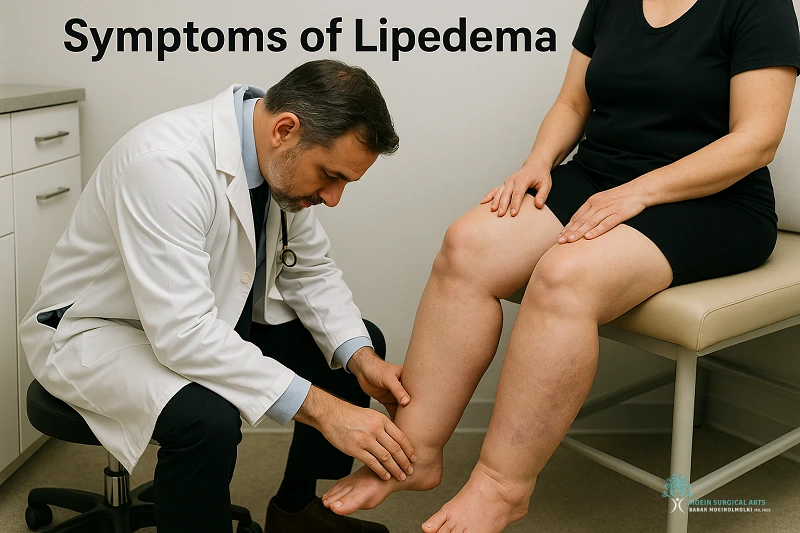
The condition is more than aesthetics. It is a condition that is accompanied by pains in its symptoms. Its most common symptoms are symmetrical fat deposition in the arms and in the legs, heaviness, or pains in the limbs, and bruises in the skin. It is colder in feeling than the rest of the part it covers. It is more apparent in the form of swelling over time, and the feet are exempt, and it is what eventually makes it distinct from the rest of diseases.
How Lipedema Progresses Over Time
The condition is progressive, which means it will be getting progressively worse unless it is treated. In the earlier stages, it may appear the same as cellulite or normal fat deposits, but the further it goes, the more it will inhibit activity and make day-to-day living more difficult. At higher levels, lipedema becomes lipo-lymphedema. It is a condition that develops if the lymph system is damaged, which leads to swelling and further issues.
In Los Angeles’ Moein Surgical Arts, Dr. Babak Moein attends patients regularly who had lipedema for years, without ever being aware of the condition. Proper identification of symptoms and awareness of the real condition is a giant stride in the way of treatment, alleviation of symptoms, and recovery toward comfort and mobility.
What is Cellulite?
Definition of Cellulite
Cellulite, often described as “orange-peel” or “cottage cheese” skin, is a cosmetic condition that occurs when fat deposits push against fibrous connective tissue beneath the skin. This creates the dimpled or uneven surface many people notice. Unlike lipedema, cellulite is not considered a medical disease but rather a common variation in how fat is stored in the body.
Causes and Risk Factors of Cellulite
Cellulite can appear in individuals of any body type or weight. It is more common in women due to natural differences in fat distribution, connective tissue, and hormonal influences. Several factors may increase the likelihood of developing cellulite:
↳ Genetics that influence skin and fat structure
↳ Hormonal fluctuations, particularly involving estrogen
↳ Aging, which reduces skin thickness and elasticity
↳ Sedentary lifestyle and reduced muscle tone
↳ Poor nutrition or chronic dehydration
Symptoms and Appearance of Cellulite
Cellulite is not harmful and does not cause physical pain or medical complications. Its hallmark sign is an uneven, lumpy skin texture, most frequently noticed on the thighs, hips, buttocks, and abdomen. It may become more visible when the skin is pinched or when light casts shadows across the affected area.
How Common is Cellulite?
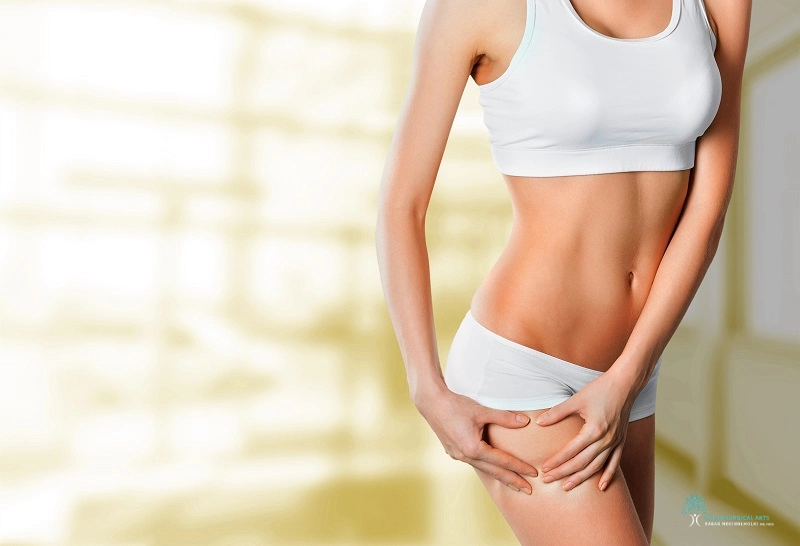
Cellulite is extremely widespread. Studies estimate that 80 to 90 percent of women will develop it at some point in their lives. Even individuals with low body fat or high physical fitness levels, including athletes, can have cellulite. This makes clear that cellulite is not simply tied to weight but is instead a normal variation in skin and fat anatomy.
Lipedema vs. Cellulite: The Main Differences
Differences in Causes
Lipedema is a chronic medical condition associated with abnormal fat tissue, influenced by hormones and genetics. Cellulite is a cosmetic condition brought about by fat pressing against connective tissue under the skin.
Differences in Appearance
Lipedema causes symmetrical swelling, resulting in column-like arms or legs that may be painful and tender. Cellulite appears as dimples or an “orange peel” texture, altering the texture of the skin without pain in deeper tissues.
Differences in Symptoms
Cellulite is symptomless physically aside from appearance. Lipedema tends to be painful, heavy, sensitive, and prone to bruising, which can really impact everyday comfort.
Differences in Progression
Cellulite tends to be stable over time. Lipedema is progressive and, if untreated, may become worse, occasionally restricting mobility and resulting in complications like lipo-lymphedema.
You can see this comparison in the table below:
| Feature | Lipedema | Cellulite |
|---|---|---|
| Type | Chronic Medical Condition | Cosmetic Condition |
| Causes | Hormonal & Genetic Factors | Fat Pressing Against Connective Tissue |
| Appearance | Symmetrical Swelling, Column-like Limbs | Dimpled, “Orange Peel” Texture |
| Pain Level | Painful & Tender | No Pain |
| Symptoms | Heavy Feeling, Bruising, Sensitivity | Appearance Changes Only |
| Progression | Progressive (Worsens Over Time) | Stable (Remains Consistent) |
| Affected Areas | Arms, Legs (Symmetrical) | Thighs, Buttocks, Abdomen |
| Treatment Need | Medical Treatment Required | Optional Cosmetic Treatment |
How to Tell the Difference؟
Key Signs to Watch
↳ Pain, tenderness, and easy bruising are indicative of lipedema, not cellulite
↳ Swelling that spares hands and feet is typical of lipedema
↳ Cellulite is superficial and cosmetic, not associated with discomfort or heaviness
Diagnosis
Since cellulite is not harmful, there is no need for any medical assessment. Lipedema needs to be diagnosed by a professional. A doctor will take a history, inspect the affected area, and sometimes request imaging tests to diagnose the condition.
When to Visit a Doctor؟
If your legs are always heavy, hurt, or bruise for no obvious reason, it’s time to see an expert. Those are not symptoms of normal cellulite. At Moein Surgical Arts in Los Angeles, Dr. Babak Moein evaluates and treats patients who are probably living with undiagnosed lipedema, bringing relief and restoring mobility.
Health Risks Associated with Lipedema
Physical Complications
problems. Pathological accumulation of fat prevents circulation, lymphatic circulation, and joints. Lipedema that is progressive renders the limbs clumsy, so performing simple activity such as a walk or climbing the stairs is an issue. Tender skin and annoying aches are common grievances.
If not treated, lipedema can progress to lipo-lymphedema, in which the lymph vessels are unable to drain fluid properly. It causes swelling and susceptibility to infections. Excess weight also causes undue stress on hips, knees, and ankles, usually accelerating arthritis.
Emotional and Psychological Effects
The emotional impact may be extreme as well. Most women experience loneliness, embarrassment, and frustration. Since lipedema can also be mistaken for being obese, patients are inappropriately instructed to “lose weight,” which results in meaningless dieting and broken self-esteem. This escalates to avoidances and depression and anxiety.
Why It Should Not Be Ignored?
Lipedema is progressive. Pain, swelling, and mobility impairments exacerbate if left untreated. Early detection and treatment are essential in order to slow its development and maintain quality of life.
Health Risks Associated with Cellulite
Is Cellulite Harmful?
Cellulite is not a disease and is not a health risk. It will not prevent mobility, circulation, or the function of the organs. It does have a cosmetic effect; therefore, the treatment is elective.
Psychological and Self-Esteem Impact
Even benign conditions have emotional connotations. It is socially accepted to associate smooth skin with beauty, and hence, most women are insecure about cellulite. Insecurity drives spending on treatments and creams even further, being supplemented by media portrayal of the “perfect” body. Cellulite does not require medical intervention, but maintaining self-esteem and a healthy self-concept is still vital.
Treatment for Lipedema
Lifestyle Interventions (Diet & Exercise)
Lifestyle modifications can’t cure lipedema but can alleviate symptoms and slow disease progression. An appropriate diet, which includes anti-inflammatory diet, can alleviate discomforts and inflammation. Gentle exercise such as swimming, cycling, or a leisurely walk can enhance circulation, strengthen muscle, and introduce mobility. It is essential, however, to recognize that dieting in the manner ordinary people diet won’t accomplish fat loss in the context of lipedema, so a helpful but not corrective intervention is a helpful lifestyle modification.
Compression Treatment
Compression therapy is a very effective non-surgical therapy for lipedema. Compression clothing specifically created for the purpose can alleviate inflammation, aid lymphatics, and alleviate arm and leg soreness. It doesn’t eliminate fat, but compression makes life more livable and offers a quality of life gain.
Liposuction for Lipedema
Many patients require liposuction, tumescent liposuction, water-assisted liposuction, or their combination, in combination with compression therapy, for successful lipedema fat removal. Unlikve cosmetic liposuction, the surgery is medically controlled, removing fat cells diet and exercise can’t eliminate so. In addition to enhancing body proportion, liposuction diminishes pains, heaviness, and risk of disease advancement.
Long-Term Treatment
Lipedema is a chronic disease, and even following a successful liposuction, it must be controlled. Individuals still must reside a healthy life, wear compressive apparel, and continue manual lymphatic drainage therapy where applicable. Lifelong management is the remedy for feeling comfortable living with lipedema.
Treatment Options for Cellulite
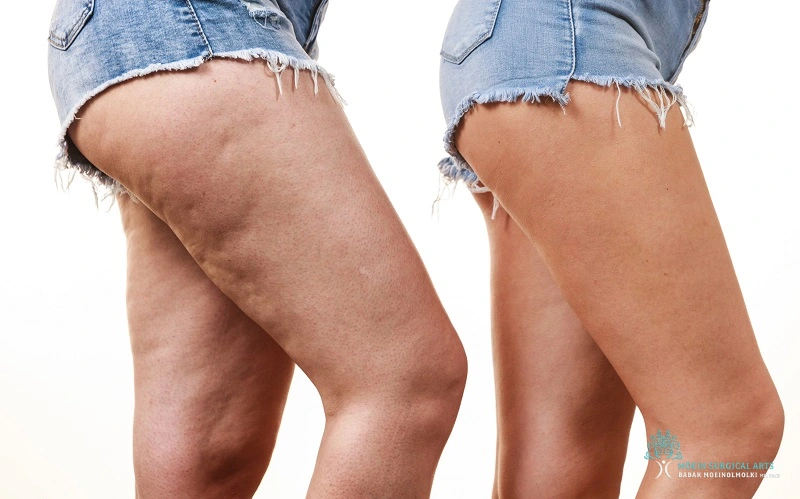
Topical Creams and Lotions
There are numerous over-the-counter creams promising the elimination of cellulite, almost all of them containing caffeine, retinol, or a combination. Some, in the short term, may tighten the skin in the area of application and/or enhance skin circulation, but the effects are generally slight and temporary.
Non-Surgical Cosmetic Treatment
There are a number of non-surgical cellulite treatments, including: Laser treatment: Kills fat cells and firms collagen. Radiofrequency procedures: Evens out the uneven look and firms the skin. Acoustic wave therapy: Kills bands of connective tissue with sound waves. These may work, but are unpredictable and usually have to be repeated dozens of times.
Surgery treatment
Advanced cases of cellulite can be operated on, for example, subcision (cutting the fibrous bands of connective tissue under the skin) or laser liposuction. These may be longer-lasting, but also more risky and invasive.
Lifestyle Management
Proper exercise, proper drinking and eating, and a balanced diet will reduce the appearance of cellulite. Building up muscle tone and overall reducing body fat should also improve the look of the skin, although the cellulite will usually be present in some way because it’s more body-structure-rather-than-weight-based.
Lipedema vs. Cellulite: Consultation, and Next Steps in Los Angeles
Lipedema and cellulite may sound like interchangeable terms, but lipedema is an ongoing condition that impacts circulation, mobility, and comfort of daily life. Lipedema must be appropriately diagnosed and treated early before it advances.
Dr. Babak Moein of Moein Surgical Arts in Los Angeles offers advanced lipedema surgery, such as advanced liposuction procedures, to remove unhealthy fat and alleviate symptoms. Lipedema surgery is also now commonly covered by most insurance companies as a medically necessary procedure. Our experts work individually with patients and assist in preparing medical forms and walking patients through the pre-authorizations process.
To find out more, check coverage, or make an appointment, call us at (310) 455-8020 or complete our secure online contact request today. Beginning your care can restore mobility, relieve pain, and revive self-esteem.
]]>Every body has its unique stories etched in its skin, and the belly button is no exception. Understanding the impact of a tummy tuck, or abdominoplasty, requires diving into the surgical process and its effects on this seemingly minor feature. As more individuals consider this transformative procedure, questions arise about how their belly button after tummy tuck will change and heal.
After a tummy tuck, the belly button can undergo notable changes in positioning and appearance. Surgeries can shift its location, sparking worries about symmetry and the aesthetic satisfaction of the result. The outcome may vary widely with various techniques employed in abdominoplasty, prompting a closer examination of how these factors play into postoperative care and emotional well-being.
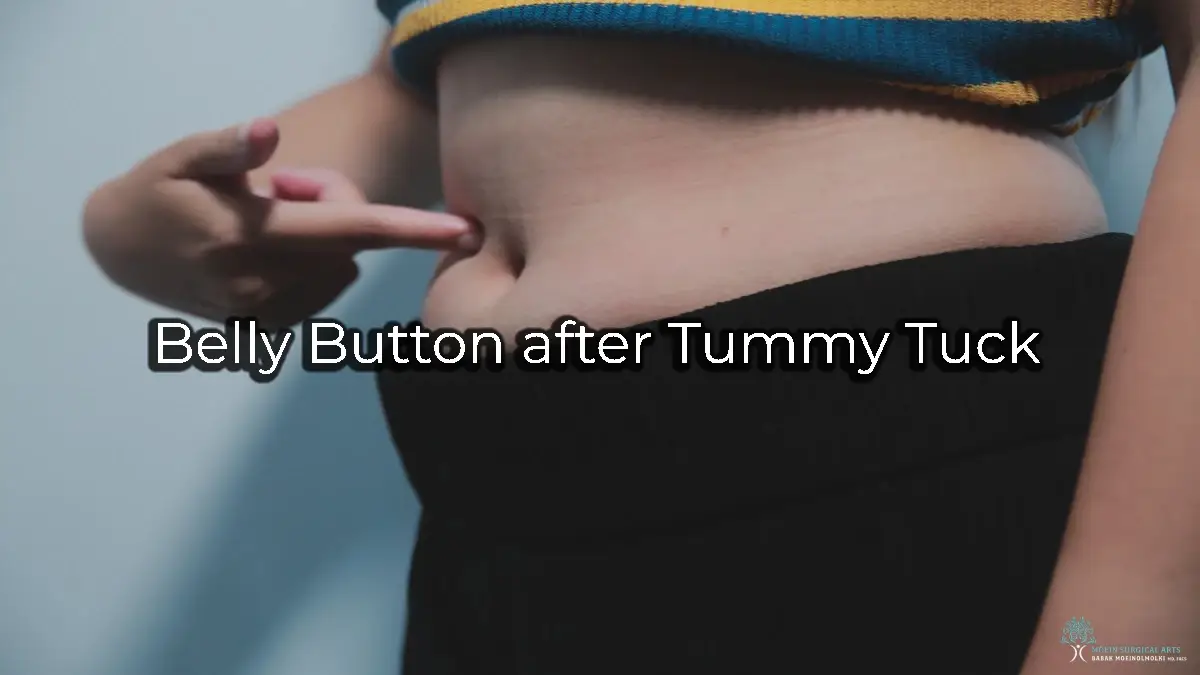
Understanding Abdominoplasty
Understanding abdominoplasty, commonly known as a tummy tuck, is essential for those considering the procedure. This surgery removes excess skin and tightens abdominal muscles. It often targets issues after weight loss or pregnancy.
A key concern for many patients is the belly button’s appearance. In tummy tuck procedures, skilled surgeons focus on creating a natural-looking belly button. This involves careful belly button reconstruction and proper belly button placement.
Key Considerations:
- Excess Skin Removal: Helps in achieving a flatter abdomen.
- Muscle Tightening: Addresses muscle separation for a firmer look.
- Belly Button: Special attention to maintain a natural belly button appearance.
Recovery Tips:
- Avoid Strenuous Activities: This aids in proper healing.
- Use Warm Water: Helps in maintaining hygiene.
- Follow Surgeon’s Instructions: Ensures optimal results.
A board-certified Cosmetic Surgeon ensures the correct blood supply for the belly button, which is a common concern among tummy tuck patients. A mini tummy tuck might be an option if less extensive work is needed. Discuss options with a skilled surgeon to determine the best approach for your needs.
How Tummy Tuck Surgery Affects the Belly Button
Understanding how tummy tuck surgery impacts your belly button after tummy tuck is vital. This procedure may alter its position and appearance, so it’s important to know what to expect. A skilled surgeon will focus on achieving a natural-looking belly button after tummy tuck, ensuring it blends seamlessly with your newly contoured abdomen.
Changes in Positioning
During a tummy tuck, the surgeon makes a horizontal incision along the lower abdomen. This might cause the belly button to move slightly. To ensure a natural belly button placement, the surgeon reconstructs it in a way that aligns with the new contours of the abdominal wall. The belly button stalk, which connects it to the abdominal muscles, is preserved to maintain blood supply, crucial for healing.
Alterations in Appearance
After a tummy tuck, the belly button’s appearance may change. A common concern for many is how it will look post-surgery. Skilled Cosmetic Surgeons aim to create a belly button that appears untouched. They take special care to ensure any scars are hidden within the natural folds. The goal is to have a natural belly button that complements the smooth abdominal skin. Always discuss your concerns with a board-certified Cosmetic Surgeon to ensure the best possible outcome.
Surgical Techniques Influencing Belly Button Outcomes
Many patients are concerned about the outcome of a belly button after a tummy tuck. The surgical techniques used in tummy tuck procedures can greatly influence the final appearance. A skilled surgeon is essential to achieving a natural-looking belly button.
Full Tummy Tuck Techniques in Los Angeles, CA
The surgeon removes excess skin and tightens abdominal muscles in a full tummy tuck. This involves a horizontal incision above the pubic area. The belly button is then repositioned to the right place. The belly button stalk is preserved to maintain blood supply. This is crucial for proper healing.
Here’s what usually happens:
- Abdominal muscles are tightened.
- Excess skin is removed.
- Belly button is repositioned.
Mini Tummy Tuck Considerations
A mini tummy tuck is less invasive and focuses on tightening the lower abdominal skin. This procedure is suitable for those with minimal loose skin. Unlike full tummy tucks, the incision is smaller, and muscle repair might be unnecessary. Belly buttons might not need repositioning, leading to a more straightforward recovery.
Considerations include:
- Limited excess skin removal.
- Minimal muscle separation correction.
- Belly button placement generally remains the same.
Choosing between a full or mini tummy tuck depends on your specific needs. Consulting with a board-certified cosmetic surgeon helps ensure the best outcome for both the belly button and overall body contour.
Common Concerns Post-Surgery
Many patients worry about their belly button after tummy tuck and the healing process. A common concern is belly button placement and appearance, as they want it to look natural and proportionate. The goal is to achieve a natural-looking belly button after tummy tuck while minimizing visible scars. Patients might also have concerns about muscle separation and excess skin, which a skilled Cosmetic Surgeon can address to ensure proper healing and optimal results.
Belly Button Reconstruction
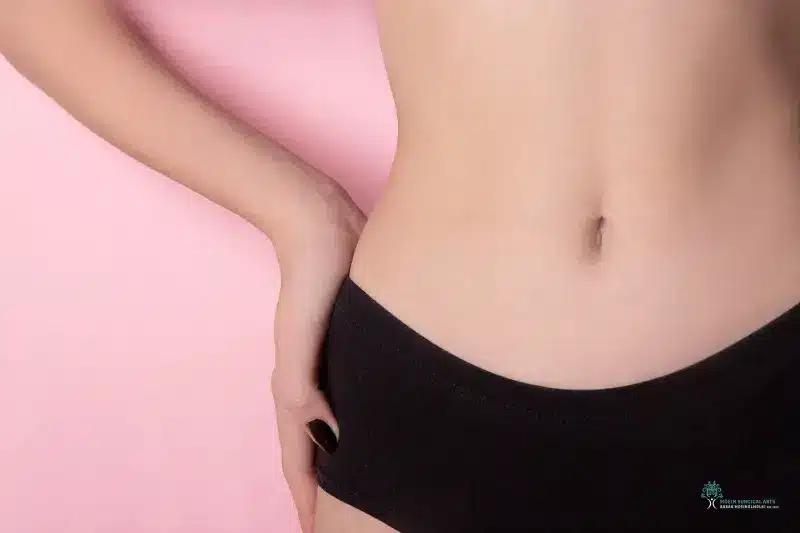
During a tummy tuck, the belly button is often reconstructed to create a natural-looking appearance. The main goal is maintaining the belly button’s aesthetics while ensuring proper healing. Here are some key points:
- Natural Belly Button Appearance: A skilled surgeon will ensure that your belly button looks natural after the procedure.
- Importance of Blood Supply: Proper blood supply to the belly button is crucial for healing and avoiding complications.
- Common Concerns: Some concerns include the shape and placement of the belly button post-surgery.
- Healing Process: For optimal recovery, it is important to follow your surgeon’s advice on post-op care, such as avoiding strenuous activities.
Belly Button Reconstruction Process in Los Angeles, CA
| Step | Description |
|---|---|
| Removal of Excess Skin | Abdominal skin is tightened to remove loose skin |
| Horizontal Incision | A horizontal incision may be made |
| Belly Button Placement | The belly button stalk is repositioned |
| Proper Healing Techniques | Use of warm water gently during recovery |
A board-certified Cosmetic Surgeon will guide you through the process, ensuring the aesthetic and functional restoration of your belly button.
Symmetry in Reshaping of Belly Button after Tummy Tuck
Symmetry in reshaping after a tummy tuck is a common concern among patients. This procedure often involves repositioning the belly button after tummy tuck, which can significantly affect its appearance. To achieve a natural-looking belly button, cosmetic surgeons focus on symmetry and proportion.
Key Factors in Achieving Symmetry:
- Belly Button Placement: Proper placement ensures a balanced look on the abdominal wall.
- Horizontal Incision: Done to remove excess skin; any asymmetry here can affect the overall contour.
- Muscle Repair: Correcting muscle separation is crucial for a symmetrical abdominal shape.
- Belly Button Reconstruction: This technique helps maintain or adjust the belly button stalk and blood supply.
Tips for Proper Healing:
- Follow your board-certified Cosmetic Surgeon’s instructions.
- Avoid strenuous activities to minimize stress on stitches.
- Keep the area clean with warm water.
- Monitor for signs of infection or poor healing.
In conclusion, a skilled surgeon is vital in achieving symmetry in tummy tuck procedures. Each step, from incision to muscle repair, must consider the natural position to maintain a balanced and natural appearance.
Managing Visible Scars
Managing visible scars after a tummy tuck is a common concern among patients. The healing process varies, but following these tips can help improve scar appearance and promote optimal healing after surgery:
Tips for Scar Management:
- Keep Incisions Clean: Wash with warm water and mild soap.
- Apply Ointments: Use silicone-based gels to aid proper healing.
- Avoid Sun Exposure: Protect scars from UV rays to prevent darkening.
- Stay Hydrated: Drink plenty of water for skin elasticity.
Scar Appearance Factors
- Skilled Surgeon: Choose a board-certified Cosmetic Surgeon for precise horizontal incisions.
- Post-Op Care: Follow all guidelines to minimize scar and maintain blood supply.
Visible scars and the belly button after tummy tuck can fade over time, particularly with the work of a skilled surgeon. If you have questions, always consult your Cosmetic Surgeon for guidance. Over time, many tummy tuck patients find that their scars and belly button after tummy tuck become much less noticeable, enhancing their overall results.
Emotional Impact of Belly Button after Tummy Tuck
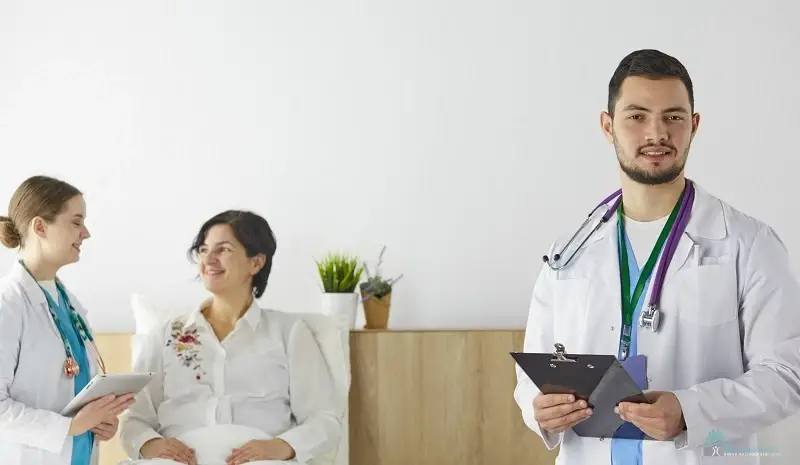
The emotional impact of belly button changes after a tummy tuck can be significant. Many patients worry about the appearance of their belly buttons post-surgery. A natural-looking belly button is a common concern among tummy tuck patients.
Board-certified Cosmetic Surgeons use various techniques to ensure a natural result. A skilled surgeon will carefully plan the belly button placement and reconstruction. The goal is to restore the blood supply and maintain the right position on the abdomen.
Here are some emotional effects that patients might experience:
- Self-esteem changes: Improved belly button appearance can boost confidence.
- Anxiety: Worry about the healing process and final results.
- Relief: Satisfaction when results meet expectations.
Proper healing and following post-op care instructions, like using warm water during cleaning, can help achieve the desired look. A qualified surgeon is crucial to avoid problems and ensure positive emotional outcomes.
Addressing belly button concerns with a skilled professional can greatly impact emotional well-being and overall satisfaction with tummy tuck procedures.
Customization Options for Belly Button Reshaping
When it comes to tummy tuck surgery, many patients focus on the appearance of the belly button. A skilled surgeon can offer various customization options for belly button reshaping, allowing for a natural-looking belly button post-surgery. Here’s what to consider:
Options for Belly Button Reshaping after Tummy Tuck:
- Belly Button Placement: During tummy tuck procedures, surgeons can reposition the belly button to fit the new contour of the abdominal skin.
- Belly Button Stalk: Adjusting the belly button stalk is crucial for maintaining a good blood supply and ensuring proper healing.
- Belly Button Reconstruction: Techniques such as creating a horizontal incision shape a more natural belly button look.
- Avoiding Muscle Separation: Ensuring abdominal muscles are properly aligned helps support the belly button’s new position.
Important Considerations:
- Choosing a board-certified Cosmetic Surgeon is vital to achieve optimal results.
- Discuss any concerns or desired outcomes with your surgeon to tailor the procedure.
- Proper post-operative care, including avoiding strenuous activities, supports healing.
Customizing your belly button can enhance the results of your tummy tuck, fitting harmoniously with your overall body appearance.
Recovery Expectations and Healing Process
Undergoing a tummy tuck comes with a set recovery journey. Knowing the expected healing process helps prepare for what’s ahead. It aids in setting realistic recovery timelines and understanding how to care for your body post-surgery.
Immediate Post-Operative Care
In the immediate days following a tummy tuck, adhering to post-operative care instructions is crucial. Here’s what to expect:
- Hospital Stay: Most patients may stay in the hospital for a day to monitor recovery.
- Dressings and Bandages: Your surgical site will be covered with dressings. It’s essential to keep these clean and dry.
- Drain Tubes: These might be placed to remove excess fluids and support healing.
- Medication: Pain relief and antibiotics may be prescribed to manage discomfort and prevent infection.
- Rest: Plenty of rest is required. Avoid any strenuous activities to allow your body to heal.
- Warm Water Cleansing: Use warm water to gently clean the area, promoting proper healing without irritating.
Long-Term Healing Timeline
Full recovery from a tummy tuck is gradual. Here’s an overview of what the timeline may look like:
- First Week: Initial swelling and bruising peak but start to subside. Limited mobility, avoid stretching or heavy lifting.
- Two to Four Weeks: Begin light walking and slowly reintroduce daily activities. The belly button may still appear swollen or differently shaped.
- One to Three Months: Most swelling reduces, and the belly button takes a more natural appearance. Scars start to fade, though they are still visible.
- Six Months to a Year: Full recovery is usually achieved. The abdominal area feels stronger, and scars continue to fade, appearing much lighter.
Staying in touch with your surgeon for follow-up appointments ensures everything is on track for proper recovery. Remember, each patient’s healing process can vary, and it’s key to be patient and follow your doctor’s advice.
Scar of Tummy Tuck Management Strategies
Caring for scars after a tummy tuck is crucial for optimal healing. Proper strategies can help minimize the appearance of scars and promote smooth skin recovery.
Key Strategies:
- Keep the Area Clean: Gently wash with warm water to prevent infection and aid healing.
- Moisturize Regularly: Use skincare products to hydrate the skin, reducing itchiness and dryness.
- Protect from Sunlight: Use sunscreen on the scar to prevent darkening and ensure even skin tone.
- Avoid Strenuous Activities: Giving rest to the abdominal wall prevents stress on the healing incision.
- Consult Your Surgeon: A skilled surgeon can provide guidance tailored to your specific recovery process.
Table: Common Scar Management Techniques
| Method | Benefit |
|---|---|
| Silicone Gel Sheets | Placed over scars, helps flatten and soften them |
| Massage | Promotes blood supply and breaks down scar tissue |
| Proper Nutrition | Supports skin’s healing process through diet |
Following these strategies and your Cosmetic Surgeon’s advice can lead to better scar outcomes post-tummy tuck surgery. A board-certified Cosmetic Surgeon will provide personalized care, ensuring the best results for your skin.
Frequently Asked Questions About Belly Button Care After Tummy Tuck

How is the belly button affected by a tummy tuck?
A tummy tuck can reshape the belly button as the abdominal skin is tightened, creating a natural-looking belly button.
What care is needed for proper healing?
- Keep the area clean using warm water.
- Avoid strenuous activities.
- Wear loose clothing to avoid irritation.
What should I do if I notice changes in my belly button’s appearance?
Contact your board-certified Cosmetic Surgeon if you notice any unusual changes. Common concerns include swelling or redness.
Can exercise impact my belly button after surgery?
Avoid exercises that strain your abdominal muscles. Follow your surgeon’s advice on when to resume these activities.
Factors Affecting Belly Button Appearance Post-Surgery
| Factor | Impact |
|---|---|
| Skilled Surgeon | Affects natural appearance |
| Proper Healing | Avoids complications |
| Weight Gain/Loss | Influences belly button shape |
Why is belly button placement important?
Proper placement by skilled Cosmetic Surgeons ensures a more natural appearance and maintains the area’s blood supply. Always consult experienced tummy tuck professionals for the best results.
Final Thoughts: Belly Button after Tummy Tuck
- Cosmetic Surgeon Qualification: Choose a board-certified cosmetic surgeon like Dr. Moein, who specializes in body contouring procedures, including tummy tucks, liposuction, and Belly Button after Tummy Tuck reshaping.
- Health Status: Ensure you are in good health before surgery. Consult with a doctor, especially if you have medical conditions like diabetes or heart issues.
- Expectations: Have realistic expectations while a tummy tuck can enhance your appearance, it won’t guarantee perfection.
- Healing Process: Be prepared for the recovery period. Follow post-op care instructions, avoid strenuous activities, and review our before and after gallery to see real patient results.
- Future Plans: Consider how factors like weight fluctuations or pregnancy may impact your long-term results.
- Cost & Insurance: Tummy tuck surgery and related procedures can be an investment. Explore insurance options and financial planning to manage the cost effectively.
- Lifestyle Changes: Maintaining a stable weight through proper diet and exercise helps preserve your results.
For expert guidance on tummy tuck surgery, Brazilian Butt Lift, breast surgeries, face procedures, panniculectomy, and more, visit our liposuction centers in Los Angeles and Tustin, California.
 Read our blog posts for more insights on cosmetic procedures.
Read our blog posts for more insights on cosmetic procedures. Check out our before and after gallery.
Check out our before and after gallery. Fill out our contact form or call us at (310) 455-8020 to schedule a consultation today!
Fill out our contact form or call us at (310) 455-8020 to schedule a consultation today!
| Considerations | Key Points |
|---|---|
| Surgeon | Choose a board-certified professional |
| Health | Be in good health and consult your doctor |
| Expectations | Have realistic goals |
| Recovery | Understand recovery needs and restrictions |
| Future Plans | Think about life changes that affect results |
| Cost | Plan financially for surgery |
| Lifestyle | Maintain stable weight |